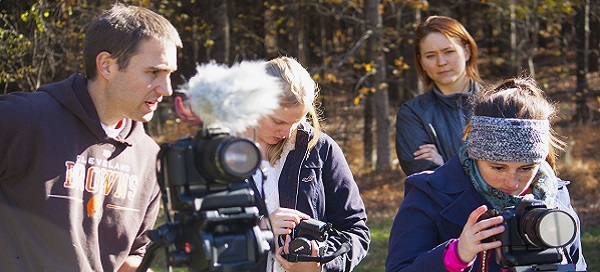
In November, TLC’s Horton Grove Nature Preserve hosted a photography and documentary workshop with participants from the Duke Nicholas School’s Stories for Nature and People (DukeSNAP) student group. In addition to interviewing TLC staff and volunteers, the students took beautiful photographs and videos of our newest nature preserve.
I sat down with Ryan Huang, co-founder of Duke SNAP and Ph.D. student at the Nicholas School, to learn more about the workshop and the video they produced.
What process do you go through when beginning a film?
Ryan: The first step in a project like this was to determine what the client, in this case, TLC, wants out of the film. Do they want to get across a specific message, reach a certain audience, and how do they want to use the film? Part of that process is figuring out how big of a project something like this should be. You want to get a specific message across, but if you make the film too long, people lose attention. Since this was also serving as a training workshop for Duke students, we had limited time and funds to do the shoot, so we ultimately decided on a short (2-3 minute) promotional video highlighting the coolest parts of Horton Grove.
What was it like being on site that day?
Ryan: The weather was beautiful! It was the middle of November, and we were worried that it would either be freezing or raining, but it was so nice out and sunny. We all ended up shedding our jackets and just working in our t-shirts. As far as logistics went, it's a difficult task getting a whole crew of 15 people organized, most of whom were students that had no prior experience and really needed guidance. Eventually we got into a groove and everyone really got into the process of figuring out how to use the cameras and what made for good footage.
What was one thing you learned that you didn't know before about TLC or the nature preserve?
Ryan: I had actually never been to Horton Grove before the shoot so I learned a ton about the property and how they've managed it. I especially loved learning about restoring the meadow.
Describe the video editing process, what did you hope to share with your audience?
Ryan: I love video editing because it's like a giant puzzle with no correct finished product. I start with transcribing and reviewing the interview footage. The interviews are what create the backbone of a documentary, it's the characters who drive the story. So this first step is arguably the most important since this is the point where you really determine what story you are going to tell. In the case of Horton Grove, it became pretty clear pretty quickly that we wanted to focus on the meadow. Not only is it a really distinctive habitat, but Diana (TLC’s Communications Manager) also had really great description of the meadow that I knew I wanted to use as the hook. To top it all off, the group got some really amazing footage of the meadow in the sunlight, making the meadow a natural focus for the film.
Are there other things you would like people to know about the Horton Grove video?
Ryan: I have to put in a shameless plug for DukeSNAP. As a student group that is relatively new, we love seeing how much support we have been receiving in our early days and how much people have been enjoying our work. I'm really excited to see our group grow and develop partnerships with groups like the TLC to create fantastic stories that we can share with the public. So if you are interested in using our work, or working with us to develop something, reach out and we'd be ecstatic to collaborate. Together, we can do a better job of communicating environmental science and get people excited to go out and explore the world, especially when we have places like Horton Grove in our own backyards.
We are thrilled with the video Ryan and his SNAP colleagues produced. To see the video, click here.
